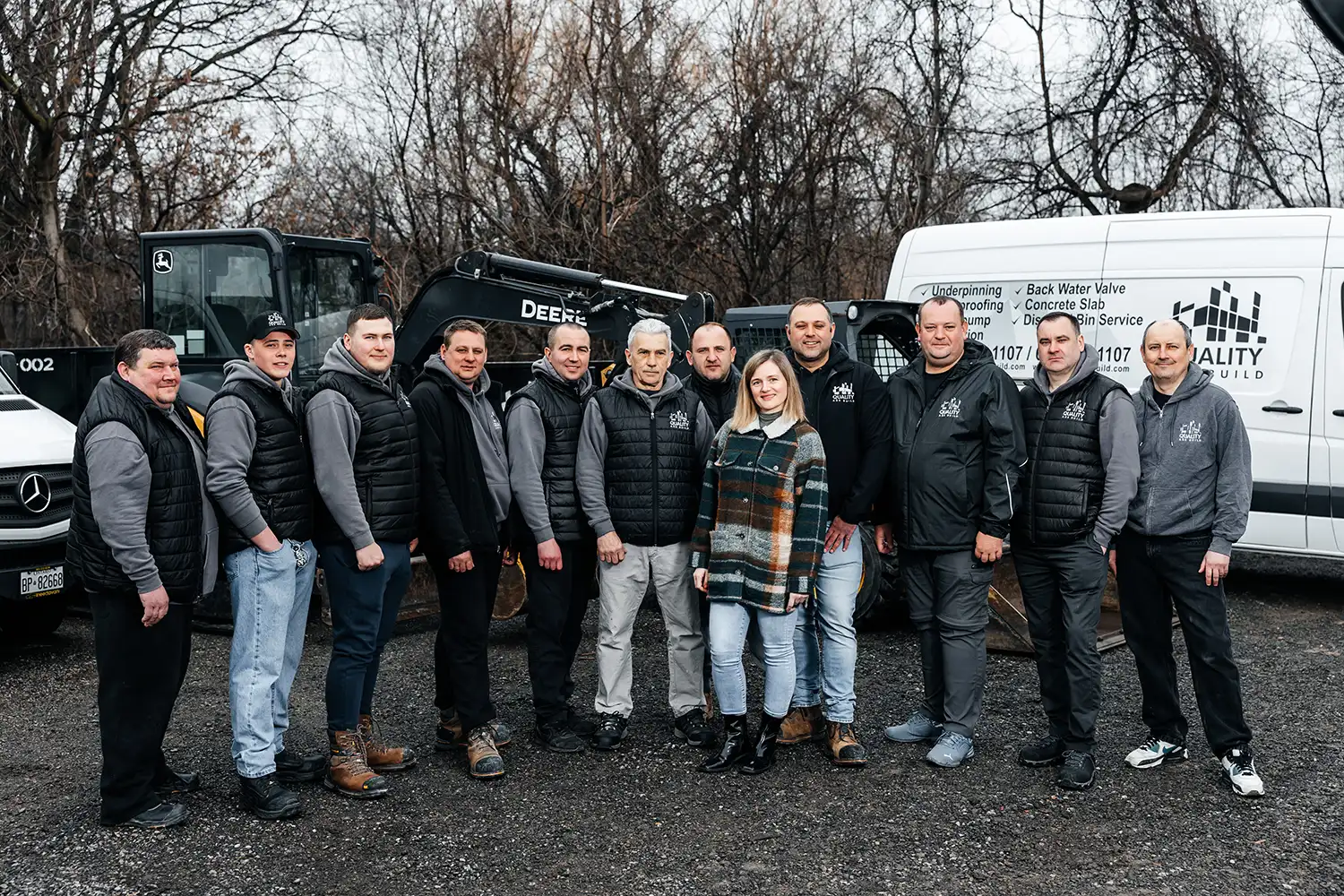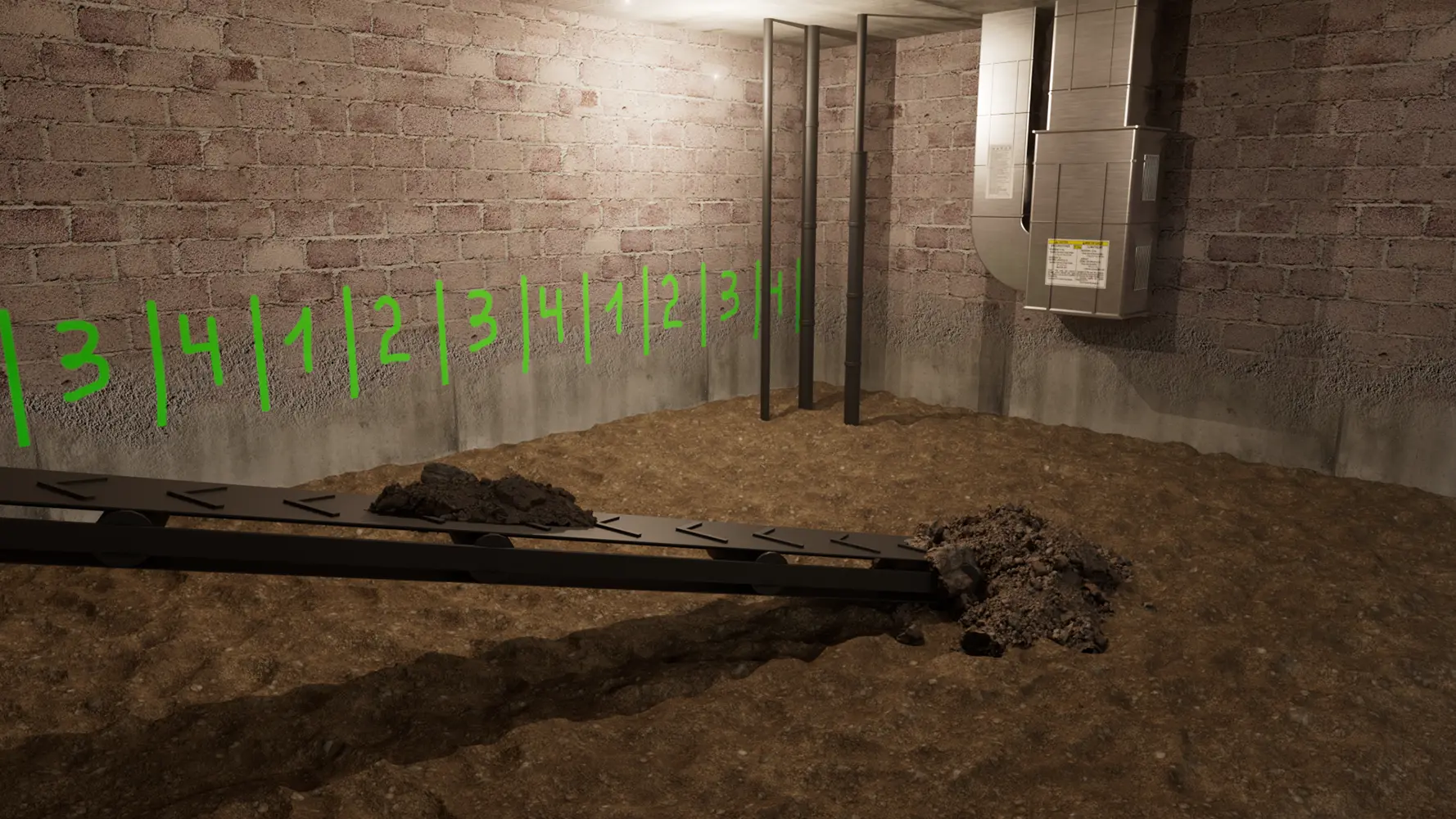High-quality materials, strength, and durability – these are the characteristics a foundation should have. A properly selected underpinning method will make buildings resistant to all external factors.
What Is Underpinning?
What is underpinning, and why do some houses need it? This is an important step to increase the strength and reliability of the structure or, if necessary, to expand the foundation. To achieve the goal, you should carefully consider the choice of underpinning method.

Structural Conditions Requiring Underpinning
Usually, foundation strengthening is required due to subsidence and collapse, which is dangerous for the entire building. Its destruction is caused by:
- soil erosion;
- low-quality building materials;
- incorrect design;
- poor soil structure;
- construction of additional floors.
Underpinning Methods
Depending on the specific requirements and condition of the building, there are many types of underpinning methods. Learn about the main underpinning Toronto service to choose the type of construction that’s right for you.
Mass Concrete Underpinning
It is also called the pit method of underpinning. First, separate areas (pits) are dug under the foundation and filled with concrete one by one, forming a stronger structure.
Cantilever Needle Beam Underpinning
Cast-in-place reinforced concrete beams resting on a concrete base, or piers transfer the load to more stable soil layers, allowing the foundation and walls to be reinforced.
Pier and Beam Underpinning
The foundation will consist of a series of piers. There are solid concrete blocks that are placed on top of the foundation to hold a lattice-like frame of wooden beams. The foundation creates a space between the ground and the house.
Mini-Piled Underpinning
Small-diameter steel or concrete Mini-Piles are drilled or pounded into the ground to transfer the load of the structure to more stable soil layers.
Pile method of underpinning
This method combines the use of piles and a reinforced concrete slab. The piles are driven into the ground and a concrete slab is mounted on top to evenly distribute the load on the pile foundation.
Pre-test Underpinning Method
The soil is compacted and compressed, which creates an additional load and makes it stronger. It is used for the construction of multistory buildings.
Resin Injection Underpinning
Resin is injected under the foundation, which has the ability to expand and fill all the voids, providing support for the structure and returning it to its original position.
Screw Pile Underpinning
Screw piles are screwed into the ground up to the supporting soil, which is able to support the load of the entire structure to be anchored. Using galvanized steel brackets, the piles are bolted to the foundation to prevent further movement.
Angle Piling
The wall is preliminarily reinforced with concrete piles, which are installed in pairs at opposite angles at a distance of 1 – 2 meters. The piles can be installed close to each other to increase the stability of the foundation.
Underpinning to Walls
Walls are divided into bays, each of which is treated separately to reduce damage and wall failure. The length of the purling between the walls can vary from 1 to 3 meters, depending on the type of foundation.
Choosing the Right Underpinning Methods
There are many factors to consider when choosing the best underpinning method. After all, over time, the soil may sink, or the building may need to be expanded or reconstructed.
Assessing Soil Conditions
The quality of the soil plays a crucial role in the underpinning of a foundation, as it affects the strength and reinforcement requirements. Poor or unstable soil conditions may require extensive reinforcement measures.
Evaluating Structural Stability
If the building has been reconstructed in the past, or any other changes have been made to the construction, it is worth analyzing all of them. After all, the assessment of all changes can impact the excavation process.
Considering Building Load Requirements
It is important to assess the load capacity of the building, as this indicator will help to design additional foundations and determine the maximum load on them.
Determining Accessibility and Space Constraints
The size of the site, the location of the building, and the presence of heavy equipment can affect the feasibility of using different shoring methods.
Analyzing Cost and Budget Factors
Factors affecting the budget in construction:
- choice of materials;
- labor costs;
- additional equipment involved.
Find out our underpinning basement cost and get an additional discount.
Consulting With Engineering Experts
At the preparatory stage, it is worth engaging experienced engineers to monitor the processes. Their recommendations will help to mitigate risks, address immediate needs, and optimize operations.
Understanding Local Regulations and Permits
Before starting work, it is critical to take the necessary safety measures, such as construction protection, familiarize yourself with local building regulations, and obtain all necessary permits.
How Quality Age Build Can Assist You
Quality Age Build provides professional services for construction, foundation repair, external and internal basement waterproofing, etc. You get a team of experienced specialists who care about the quality of materials, the accuracy of work and the durability of your property.

Conclusion
Having familiarized yourself with the methods of underpinning in construction, you can choose the best one and significantly strengthen your foundation. Contact Quality Age Build for help, and we will be your ally and guarantor of the highest quality standards for your construction needs.
Contact us
Quality Age Build Inc is at your service across the GTA. Request a quote today and ensure your property is in expert hands.
Related Services
Pair our expert guidance with our underpinning services to stabilize shifting soils, strengthen your foundation, and ensure lasting structural support.
FAQs
How can soil conditions affect the choice of underpinning methods?
Different soil types have different levels of hardness and stability, which can impact the effectiveness of underpinning methods. Soft and unstable soils require more extensive measures.
What are the cost implications of different underpinning techniques?
Methods differ in price, as many factors are taken into account: time required to complete tasks, materials, equipment, and the scale of the work.
What role do structural engineers play in the underpinning process?
They provide expert services to ensure that all work is carried out efficiently and using the right methods and materials. This helps to reduce risks and optimize the process.
What are the potential risks and challenges associated with underpinning foundations?
Excavating the foundation to the required level can sometimes be difficult, as the soil can be densely compacted. But with the help of special equipment, these problems are quickly resolved.

